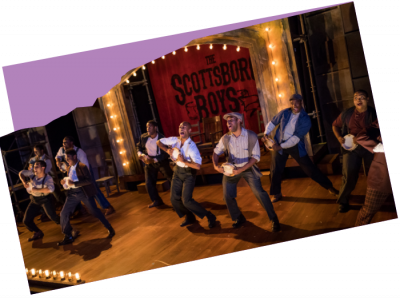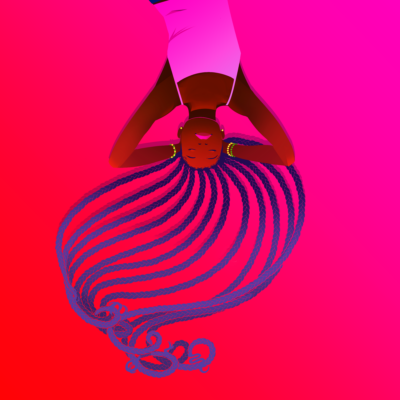Your donation sets the stage for a new season of Boston's most intimate, entertaining and provocative plays and musicals. Our shows make powerful connections with our audiences-- and they are only possible because of you.
Notes from Dramaturg Walt McGough
Notes from Dramaturg Walt McGough
“We do not know what the dragon means, just as we do not know the meaning of the universe, but there is something in the image of the dragon that is congenial to man’s imagination, and thus the dragon arises in many latitudes and ages. It is, one might say, a necessary monster, not some ephemeral and casual creature like the chimaera or the catoblepas.” —Jorge Luis Borges, The Book of Imaginary Beings
Trying to get a handle on a John Kuntz play can often feel like grasping at smoke. Just when you think you have a good firm grip, the rules change ever so slightly, and you’re left dealing with a surprising wrinkle. The result is a giddy, exhilarating, and madcap trip through different layers of reality, where ideas and themes sneak up in your peripheral vision only to slip away when you turn your head to look.
To facilitate the collaborative, free-roaming, and adventurous process that director David R. Gammons led during rehearsals, SpeakEasy’s production team came at the script from a number of different angles, from imagery and thematic work, to approximated maps of the different levels of reality the play occupies. What follows is a small sample of the raw materials that went into constructing the not-so-safely caged chaos of the play.
Installation Art
In his interview, Director David R. Gammons spoke of thinking of this show in terms of performance and installation artwork as opposed to more “classical” theatre. The sprawling, messily constructed sculptures of artist Jason Rhoade provided an initial scenic inspiration for the production team, followed by the tightly contained installations by Louise Bourgeois and Matthew McCaslin’s work with video and television sculptures.
“All art comes from terrific failures and terrific needs that we have. It is about the difficulty of being a self because one is neglected. Everywhere in the modern world there is neglect, the need to be recognized, which is not satisfied. Art is a way of recognizing oneself.“ —Louise Bourgeois, 1988
Mirrors and Reflections
Echoing the figure of ‘The Double’ in Borges’ book, reflections and iterations play an important part in Necessary Monsters. Doubled casting allows characters to resonate with one another across layers of reality, and events repeat and change with each passing moment. Even special-effects artist Cissa gets in on the action, by creating the reflection of a killer for the film that she is working on.
The Book of Imaginary Beings
Jorge Luis Borges’ Book of Imaginary Beings provided a core starting point for Necessary Monsters. All of the characters in the play found their start as one of the creatures Borges describes. Though layers of characterization have been added on top of them, the central grain of many of Borges’ monsters remain, and some of them are spoken about during the course of the play. Here are a few that might be recognizable, although there are plenty more. (All quotes are from Borges):
- Banshee: The “woman of the fairies” does not have a distinct shape, but is instead described by her keening wails.
- Brownies: “These are helpful little brown men whose name is derived from their color. They visit farms in Scotland while the family is asleep and lend a hand with the household’s chores.”
- Elves: “In the Middle Ages there was a widespread belief that Elves would press down upon the sleeper’s chest and cause frightful dreams.”
- Harpies: “Invulnerable, and fetid; they are all-devouring, shrieking creatures…In Greek, the world ‘harpy’ means ‘she who abducts.’”
- Minotaur: “It is fitting that at the center of a monstrous house there should live a monstrous inhabitant.”
- Animals That Live in the Mirror: “The world of mirrors and the world of men were not, as they are now, separate and unconnected.”
- Sirens: “The Sirens tempted the warrior with the knowledge of all things on earth.”
- Swedenborg’s Angels: “In Heaven, the rich continue to be richer than the poor, since they are accustomed to wealth.
Russian Nesting Realities
In the first production meeting, director David R. Gammons likened the structure of Necessary Monsters to that of a Russian nesting doll, with each layer of reality contained within another. Many of the “levels” in Kuntz’s play are defined along genre lines, as real and fictional worlds interweave, mix, and churn.
Genres
Necessary Monsters is many things within the course of the play: a book, a film, a different film, and even a children’s’ TV show. Each of these layers occupies a different genre structure, keying off of Kuntz and Gammons’ interest in media, mitigation, and entertainment forms. Although be aware: none of the genres in Necessary Monsters are exactly what you’d expect:
- The Thriller: 80s-style, no nonsense. A killer on the loose and a hard-nosed cop on his trail.
- The Noir: Mystery, intrigue, shadowy dealings and black-hearted cynicism. Double, triple, and quadruple crosses abound.
- The Book: A best-selling book club staple. Your mother has probably read it already.
- The TV Show: Sing along and prepare for storytime!
 Past Productions
Past Productions JAJA’S AFRICAN HAIR BRAIDING
JAJA’S AFRICAN HAIR BRAIDING





